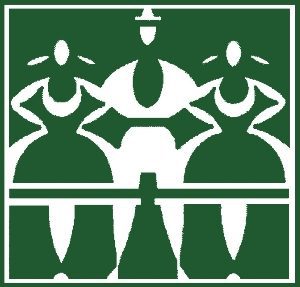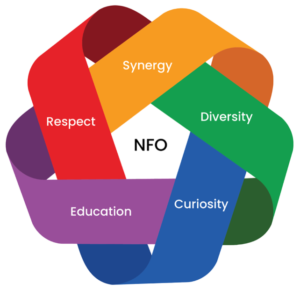BACKGROUND
A subcommittee of the National Folk Organization was created to investigate American youth folk dancing in our country. The scope of the project included youth attending school from the elementary school level through the university. It was the feeling of some members of the group that there was a large number of youth to be found folk dancing all around us.
The investigation and gathering of video lasted for several years, with a preliminary presentation at the NFO Conference in Estes Park. It was decided at the NFO Conference in Portland to make the final presentation on our website.
Examples of youth dancing have been selected for viewing here (links below).
- Residencies where a master teacher goes into a school setting and presents international folk dances to the youth of the school.
- Performing groups that began as part of a school program and continue to perform with an ever-changing group of young dancers.
- Community groups that include youth from an expanded area within a city or town.
- Ethnic groups that provide a way to maintain and transmit a culture to the next generation within that ethnic community while also conveying that culture to the greater American community as a whole.
- Specific events where dancing is part of the experience
A major challenge for all of these groups of young dancers is maturation. They grow up, move to higher levels of education, and often have to leave the cultural experience behind. They move to communities were opportunities to dance, whether in a performing group or recreationally, are minimal or non-existent. Another significant challenge is getting married, having children, and entering the working world.
The key to all of these categories is the leadership: The master teacher that visits a school for a residency; the teacher with dance experience who is able to develop an ongoing program at a school or within a community; the ethnic dance performer with teaching ability; or the creative teacher who has developed a program that includes dance. In all cases, these master teachers have each made dance available to a very large number of children. Examples of youth dancing include the following groups:
A special thanks should go to each and every teacher who has given so much to our
youth in this activity we all hold so dearly. The seeds have been planted and we all hope they will bear fruit in future years.
***CLICK on the NAME OF THE GROUP to view the video***
NOTE: These are Windows Media Video (.wmv) files. If you are using a Mac, you will
need software to run .wmv files such as Flip4mac.
Mladost
Mladost is a performing group of teenagers from the Boston, Massachusetts, area that started in 2006 under the direction of Andy Taylor-Blenis. These are American youth that grew up within the folk dance community of that area. The group has matured and now includes dances from Hungary, Poland, Bulgaria and other countries as well, and they often work with professional choreographers.
Hilltop Heritage Dancers
The Hilltop Heritage Dancers grew out of an in-school activity initiated in 1992 by Geri Branch, the principal of Hilltop Elementary School in Lynnwood, Washington. By 1995, Geri had single-handedly developed this into an after-school program and a full-fledged performing group. The number of participants (1st-6th graders) grew from 17 to 64. All participants agreed to practice one day a week for a year.
Upon Geri’s retirement in 2000, Thea Huijgen became the director. The group now averages 2-3 performance each month and their dance programs average from 20 minutes to two hours. Sadly, the group disbanded in 2011.
Salt Lake City Residency
One of the important components of youth dancing comes from residencies of dance teachers working in a public or private school for a period of time. The residency usually end with a dance activity where the parents can see and share the dance activities in which their children have been involved. NFO member Katherine St. John has done many of these residencies in and around the greater Salt Lake area.
Residency with Sanna Longden
The contribution to American youth dancing must include NFO member Sanna Longden. She has conducted dozens of residencies in schools throughout the United States. She has also taught countless dance workshops and seminars for teachers as well, making it possible for those teachers to include dance as part of their curriculum. She has also worked closely with publishing companies to include the multi-cultural components of dance in their works.
Sussefusse
Sussefusse is a recreational performing group from Portland, Oregon, under the direction of Heidi Vorst. Dancers range in age from 8 to 18. The group has been in existence for 25 years and 18-24 youth participate each year. The mixed ages have always danced together, and they are successful because they enjoy each other. Sussefuse has traveled to Europe several times and they now perform with live music as well.
Brigham Young Urniversity International Folk Dance Ensemble
The BYU International Folk Dance Ensemble was founded over 50 years ago by NFO member Mary Bee Jensen and is today directed by NFO member Ed Austin. This program originates from the Department of Dance at the University, where over 5,000 students enroll in dance courses each semester.
The excellence of their program is highlighted in their wonderful performances where they showcase the ethnic diversity of the world. They often represent the United States at world dance festivals abroad. The selections provided here are from a concert entitled “The Gathering.”
Koraci Croatian Folk Ensemble
The Koraci Croatian Folk Ensemble is an ethnic group of youth ages 9-20. While the group is based in San Jose, California it attracts youth from all over the San Francisco Bay Area. They have excellent direction and have used the services of professional Croatian dance choreographers to help recreate the history of their culture.
Tance El Dorado
Tance El Dorado was formed in 1998 by AI and Teddy Wolterbeek in the Sierra foothills of northern California. They approached the German language teacher at the local high school and performed for her students. The teacher then set up an after-school activity program with the Wolterpeeks as the dance teachers where they could help develop their skills in multi-cultural dance.
This group started to perform dances from many different countries and traveled and performed throughout northern California. As the older students began to graduate, they brought younger siblings and friends from the high school into the group. Many of the original dancers still come back to dance with the group. Several of the dancers have started dance classes at the colleges and universities where they are studying.
The original Tance El Dorado has just about disappeared. The Wolterbeeks decided to retire from the dance world, but several parents from the high school talked them into coming out of retirement; they now have 35 new dancers following the path of the original Tance El Dorado.
Alpentanzer Schuhplattler
The Alpentanzer Schuhplattler group of Sacramento, California began as an adult performing group with just one or two teenagers as members. Although they often performed for local high schools, students showed little interest in joining the group.
Five years ago the group approached the German language teachers in several local high schools and a joint Oktoberfest was held with two of the schools. From this, a small group of interested teens grew. Student leaders were developed and they became the presenters at the high schools. Numerous teens joined the Alpentanzers until today 75% of the group are teenagers.
Gary Schultz recently passed away after doing a marvelous job of pulling all of the above events together. Markus Geissler is now the director of the group, and they are still presenting programs all over the state.
Wyoming Trek
NFO member Judy Bush was asked to work with Mormon youth as part of a trek done by 350 members of her church from Caldwell, Idaho. They re-enacted part of the trek of the pioneers by walking the same trails through Wyoming as the early pioneers. One of the diversions for those earlier pioneers was dancing together in the evening. Judy was asked to teach the various group leaders the dances that were done at that time. They in turn shared that experience with the rest of the group. These are some video clips from that experience.
Irish Dance Idaho
A “Celtic Holiday” is held annually in Boise, Idaho, to display the talents of youth ages 5-20. Rebecca, Spencer, and Heidi Ingram have created an organization called Irish Dance Idaho. The emphasis of the organization is in the joy of learning that accompanies performance and teamwork, rather than in competition.
Veselka and Sonechko with George and Irina Arabagi George and Irina Arabagi were both professional dancers with “Joc,” a famous ethnic group from Moldavia. They moved to the Sacramento area several years ago and started their first Ukrainian youth group called “Kalyna,” which has performed up and down the west coast. They, too, reached the age that pulled them away to school and the working world, but behind them are the younger Ukrainian groups that are maturing into wonderful performers.
If you would like to edit or add to this page, please send email to the webmanager.

